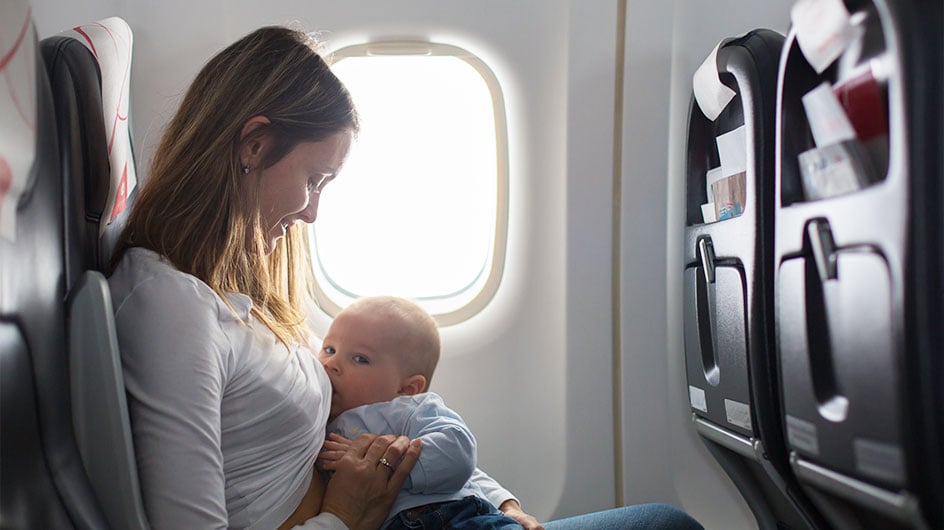As a breastfeeding mom who's logged plenty of miles—both on cross-country road trips and flights with my babies—I’ve learned some valuable lessons along the way. If you’re gearing up for your first trip with your little one, here are my top travel tips for breastfeeding moms to help make the journey smoother.
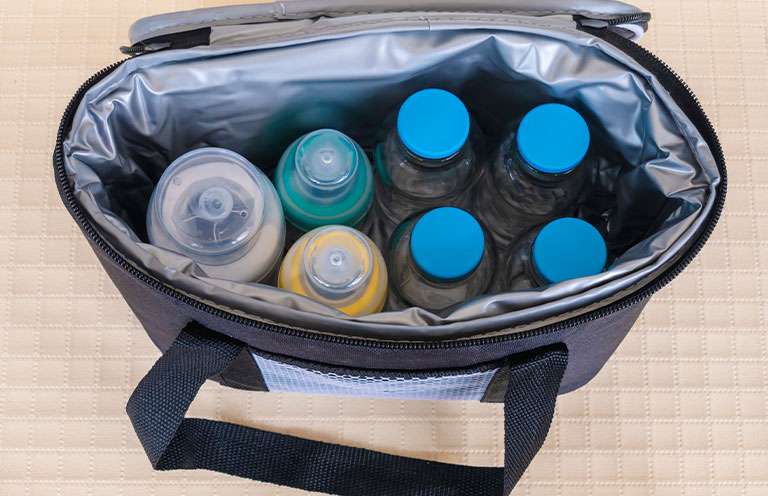
Pack for success
No matter where you’re headed, bringing the right gear makes all the difference. Here’s my go-to packing list for breastfeeding moms.
- Nursing cover and nursing tops: At a minimum, pack a loose top that makes it easier to nurse on the fly.
- Kushies GoPillow: My favorite breastfeeding accessory for plane travel, this compact pillow slides over your arm with a blanket attached, allowing your baby to rest comfortably on your arm while staying covered.
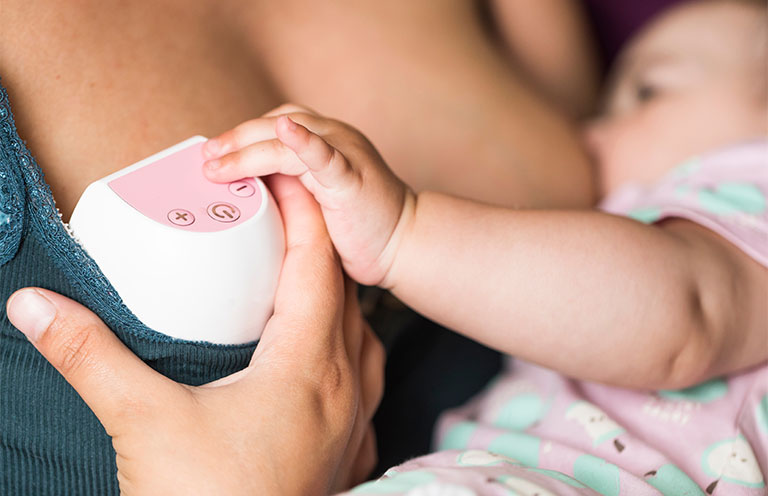
- Portable breast pump: Remember to charge it before you leave home.
- Breast pump charger and cleaning supplies: Include wipes and steam bags for easy cleaning. If you pump on the go, a car charging adapter can be a lifesaver.
- Breastmilk storage bags, a cooler, and ice packs: These are must-haves if you plan to pump while traveling.
- Extra bottles and a car bottle warmer: Don’t forget these essentials if your baby drinks breastmilk from a bottle and you’re traveling by car.
- Baby carrier: A carrier is great for keeping your hands free and your baby close.
- Wet/dry bag: Store soiled burp cloths, leaking bottles, or damp pump parts until you reach your destination.
- Snacks and water: Staying nourished and hydrated helps you feel your best and support your little one.
- Backup manual pump: Even if you usually rely on an electric pump, having a small manual pump as a backup is a game-changer if you lose power, forget your charger, or can’t find an outlet.
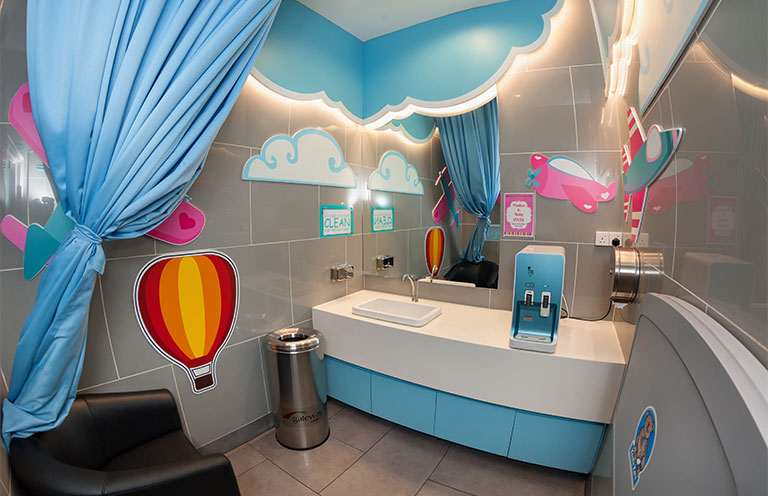
Plan wisely
Some strategic planning can help minimize stress and ensure smoother feedings on the road or in the air.
Do your best to stick to your baby’s normal feeding schedule. I’ve found that it helps if you can schedule flights around them.
- Nurse your baby before boarding the plane or buckling up in the car. This can give you about two to three hours before the next feeding time—which might even be enough time to get to your destination.
- Don’t feel deterred to breastfeed in public when your baby requires it. All 50 states legally allow it, and many offer additional legal protections. Still, it’s helpful to review your destination’s breastfeeding state laws.
- When traveling internationally, research customs and laws and understand local attitudes about breastfeeding.
- If you prefer to not nurse in public, many airports have nursing rooms. Call the airport beforehand to find out where they’re located. Nursing rooms typically have a chair, sink, and electrical outlets.
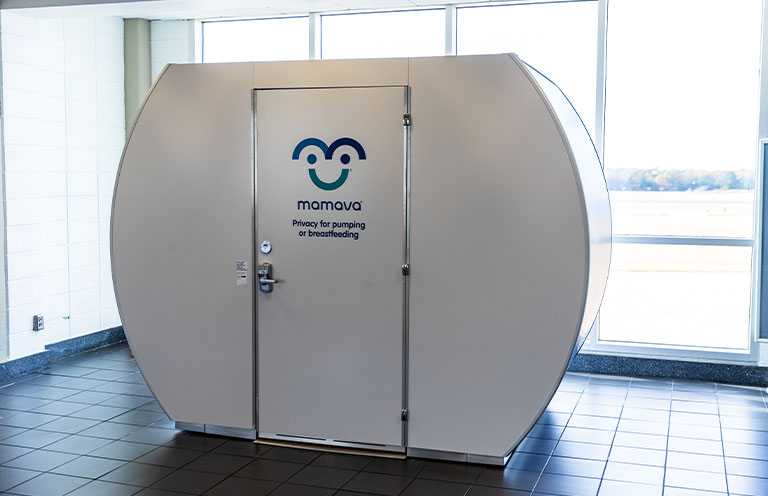
- Many airports, stadiums, and workplaces now offer Mamava Lactation Pods—freestanding, private spaces designed to give breastfeeding parents a secure and comfortable place to nurse or pump.
- Call your hotel in advance to make sure it has a fridge/freezer. Not all hotel mini-fridges include freezers or reach freezing temperatures. Confirm if they can provide a full-size fridge or freezer access for breast milk storage.
- Add an extra hour or two to your schedule to account for unscheduled nursing breaks.
- Use a pumping/nursing timer app. Apps such as Baby Tracker or Huckleberry can help you stay consistent with your pumping schedule while on the go—especially across time zones.
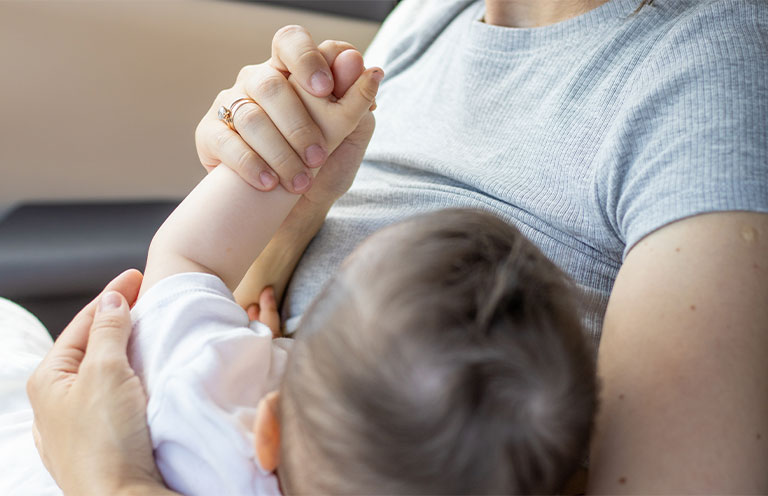
Navigate road trips
Road trips with a nursing baby require a few extra stops, but with the right mindset and tools, they can be enjoyable for both of you.
Schedule stops for food and gas to coincide with breastfeeding breaks. If you park somewhere to nurse, position your car so that you’re aware of your surroundings.
- It’s illegal to nurse your baby while the car is moving. Unrestrained nursing in a moving vehicle puts both you and your baby at risk in the event of a sudden stop or crash. When it’s time to feed mid-road trip, park the car in a safe spot to nurse your baby.
- If you sit in the back next to your baby and he or she will drink breast milk from a bottle, you can feed them while they’re in their car seat. This will allow you to make fewer stops for nursing.
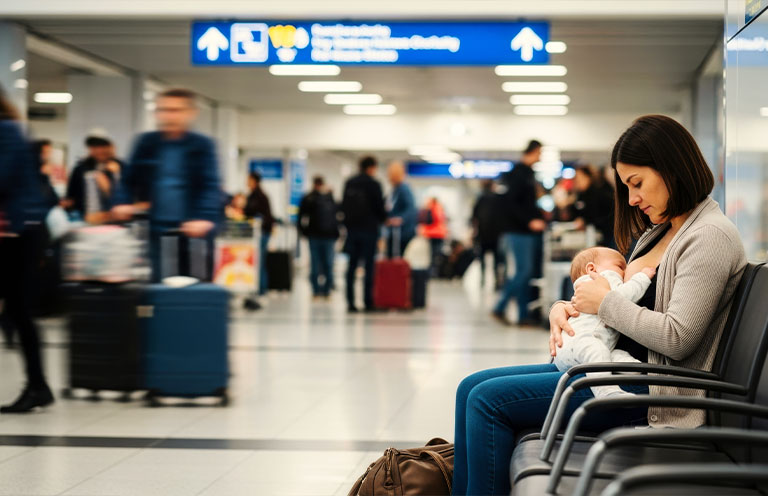
Streamline airport security
Flying while breastfeeding can be intimidating, but knowing the rules well before you arrive at the airport can save time and frustration.
- According to the TSA, you’re allowed to bring breastmilk and formula cooling accessories, such as ice packs, regardless of whether you have your child or breastmilk with you.
- Advise the TSA officer before the screening process if you are carrying breastmilk or formula. Remove the items from your carry-on so that they can be screened separately. TSA prefers milk to be stored in clear bottles rather than opaque containers or pouches, as it speeds up screening.
- Most airlines consider a breast pump a medical device and don't count it toward your carry-on luggage allowance—but check with your carrier before flying to confirm.
- If you are bringing a breast pump through TSA security checkpoints, place it in a separate bin when going through TSA to ensure it’s screened properly.
- To avoid bringing breast milk through TSA, consider using a service such as Milk Stork, which ships refrigerated breast milk directly to your destination.
You also may want to include a summary of TSA and lactation rights in your phone’s notes or printed in your travel binder. Knowing your legal rights when it comes to pumping or nursing in public, including at airports, can help you advocate for yourself and your baby confidently.
